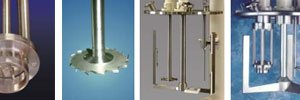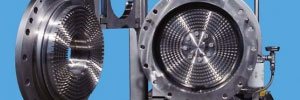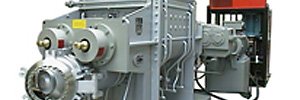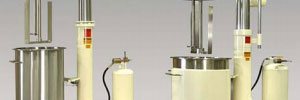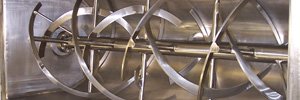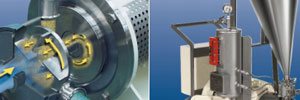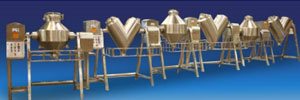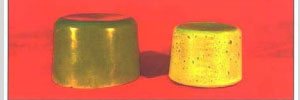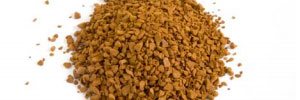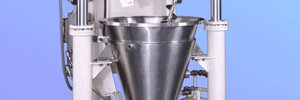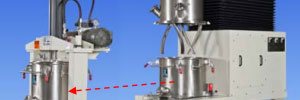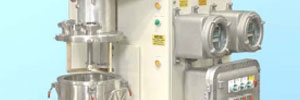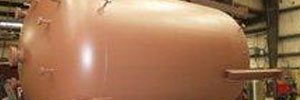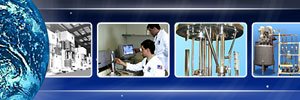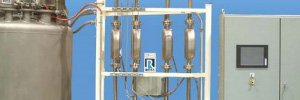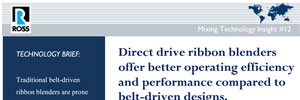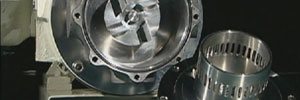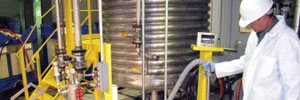Mixing Technology Insights
Mixing Technology Insights offer a brief look into ROSS' products, process expertise and market strengths. The reports delve into how the equipment can be used to improve your process and to add to your bottom line. ROSS strives to provide its customers with up to date information covering new technology in the industrial mixing and blending industry.
Select a specific product, process or market to view a list of related Insights:
Select Product
Select Process
Select Industry
- Recommended Mixing Equipment for Textile Emulsions
In textile processing, specially formulated emulsions impart various characteristics to fabrics such as water repellency, softness, improved sewability and wrinkle recovery as well as resistance to staining, tearing and shrinkage. - Recommended Mixing Equipment for Silicone Emusions
Silicone emulsions impart lubricity, softness, water repellency, gloss, anti-slip and other properties to a range of products including cosmetics, pharmaceuticals, coatings, textiles and plastics. - High Shear Mixing – Single pass emulsification
Consider an ultra-high shear mixer for your single-pass emulsification requirements. Advantages include simple operation, high throughput rates, consistent product quality, easy cleaning procedure and low maintenance. - Homogenization of submicron
emulsions
Submicron emulsions are traditionally prepared in rotor/stator mixers, colloid mills and high pressure homogenizers. Ultra-high shear mixers are the newest alternatives to conventional emulsification methods, delivering higher emulsion stability, improved throughput, easier maintenance, and/or lower cost. - Specifying inline rotor/stator
mixers
This bulletin discusses some best practices and considerations in the selection and specification of inline rotor/stator mixers. - Mixer options for pureeing and liquefying solids
A variety of mixers are suitable for pureeing requirements – from single-shaft rotor/stator mixers and high speed dispersers to multi-agitator equipment for higher viscosity formulations, and even ultra-high shear mixers which are used to achieve a high level of smoothness and consistency in some products. - Multi-agitator mixer/reactors
Multi-agitator mixers are ideal for reaction processes that require intense mixing, high speed dissolution, emulsification, deagglomeration or heating/cooling of viscous liquids. - Improve emulsion stability through ultra-high shear mixing.
The droplet size distribution of an emulsion largely dictates its stability. Fine droplet sizes are produced by applying sufficient shear, often through the use of conventional rotor/stator mixers. Today, ultra-high shear rotor/stator designs are available which can improve emulsion stability of certain formulations. - High speed mixing: saw-tooth dispersers vs. rotor/stator mixers
The saw-tooth disperser and rotor/stator mixer are two of the most widely used high speed mixers yet many are unaware of the differences in their utility and operating capacities. Knowing the unique attributes of these devices is important in mixer selection and process optimization. - Inline high shear mixers instantly boost batch production without disturbing existing equipment.
Many batch mixing processes can be optimized with the addition of an inline rotor/stator mixer. The supplemental agitation and shear provided by an inline mixer boosts production by reducing cycle time. Multiple batch tanks can be serviced by a single inline mixer and benefit from its pumping capabilities. Another practical advantage to an inline mixer is that it is easily installed without disturbing pre-existing equipment. - Run your rotor/stator mixer at maximum speed to optimize emulsification & particle size reduction.
Generally, the maximum speed setting of a rotor/stator mixer provides the optimal mixing results in terms of particle or droplet size reduction. Once an equilibrium size distribution is reached, subsequent passes through the rotor/stator give diminishing returns. For applications that are processed at the maximum speed of a traditional rotor/stator mixer but still fall short of the desired particle or droplet size, a move to higher energy devices, such as ultra-high shear mixers, is recommended. - Ultra-high shear mixers increase overall throughput and efficiency of homogenization processes
Ultra-high shear rotor/stator systems speed up cycle time by reducing the number of passes required through a high pressure homogenizer, an inherently low-throughput, high-energy device. Since homogenizers are also generally maintenance-intensive, an efficient ‘pre-mixer’ generates significant savings in the overall cost of production. In certain applications, ultra-high shear mixers even offer a viable alternative to homogenizers.

